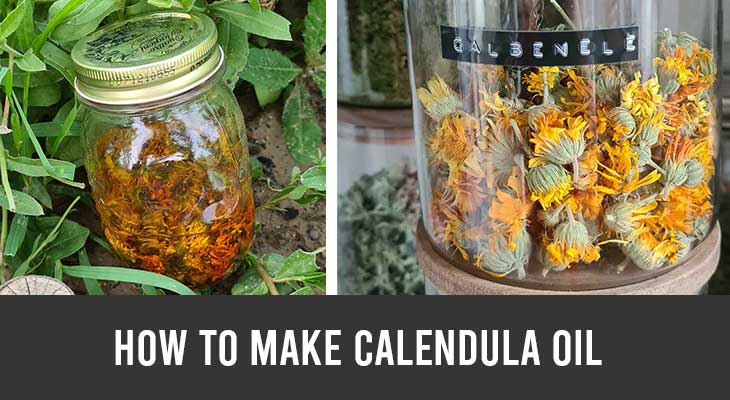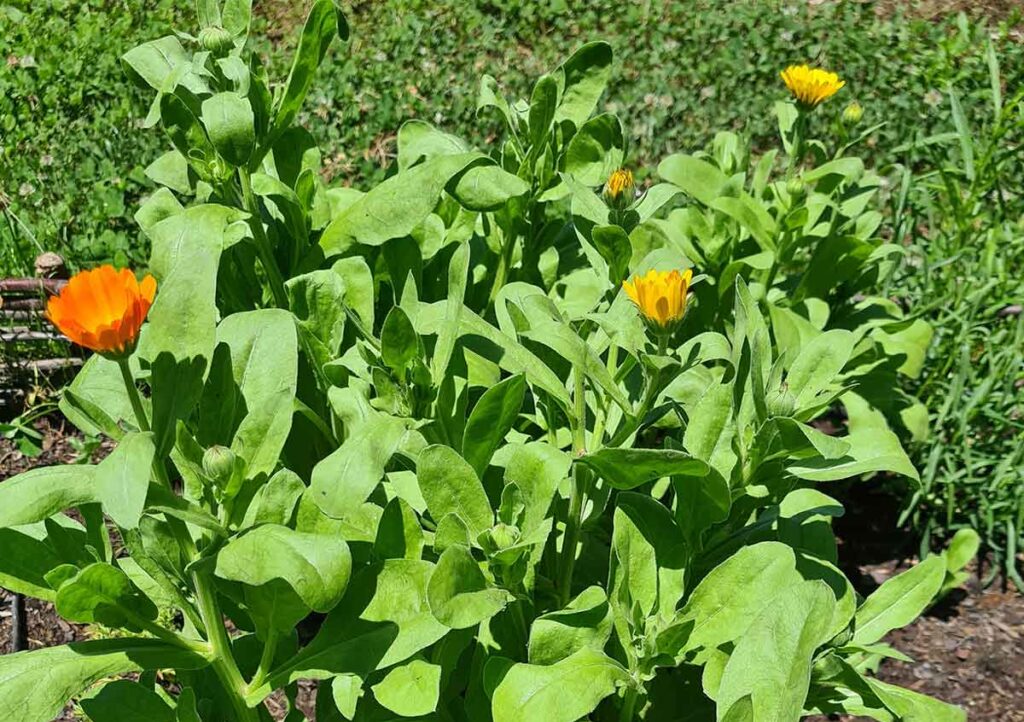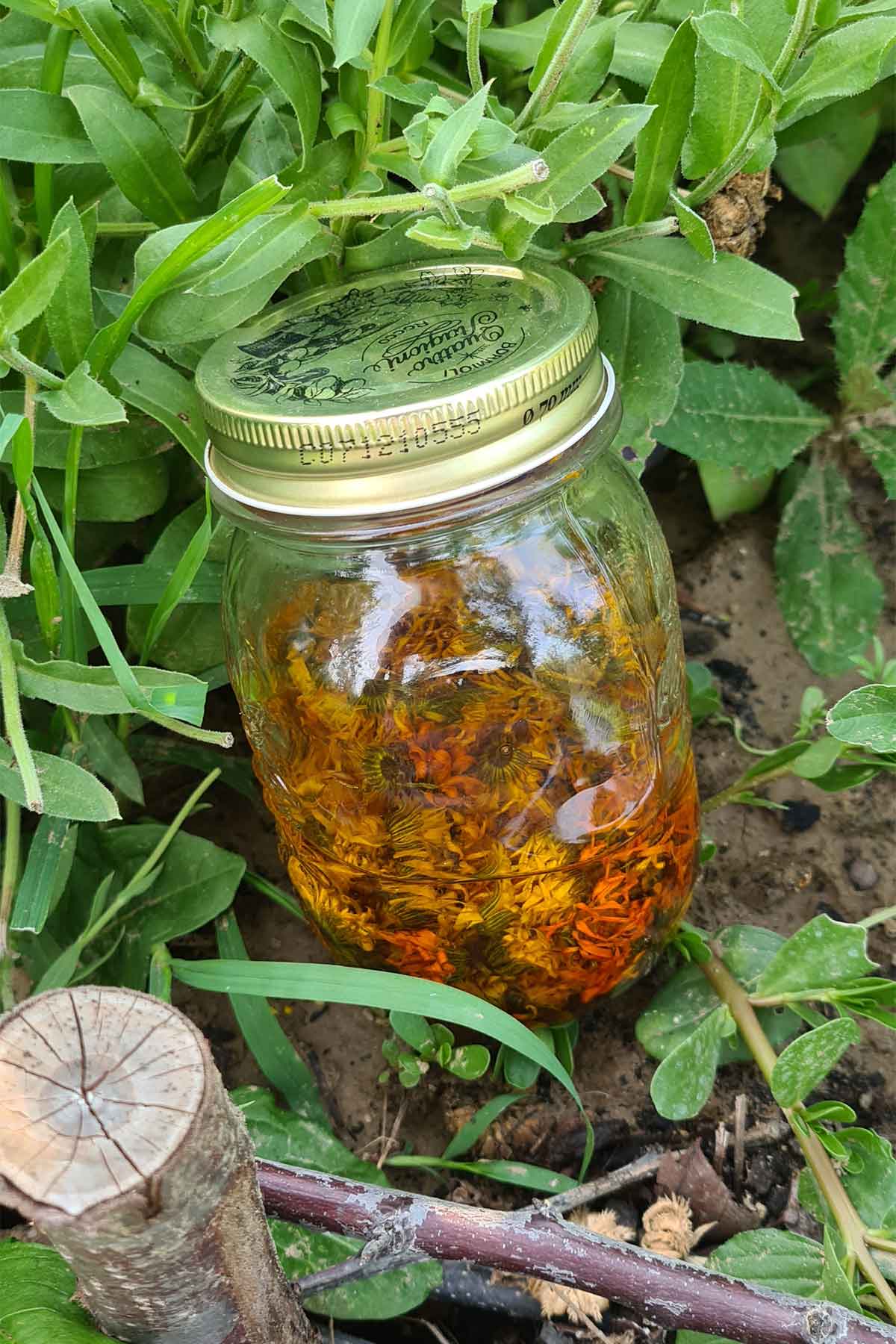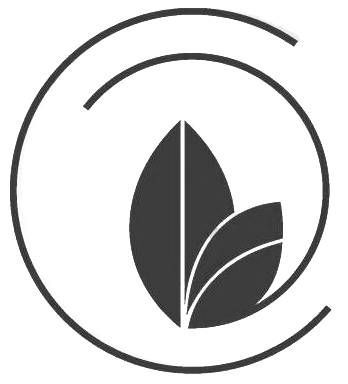How to make calendula oil – step by step easy method

Calendula is a bright yellow annual flower that is both ornamental and medicinal. One of the best ways to use calendula plants is to make calendula oil which has a lot of healing properties. Here’s everything you need to know about it! In this article, I’ll tell you everything you need to know about how to make calendula oil at home.
Table of contents:
- What is calendula oil?
- Calendula oil healing and medicinal properties
- Best types of base oils to use for making calendula oil
- Step by step process for making calendula oil at home
- DIY calendula oil storage and shelf life
- How to use calendula oil

What is calendula oil?
Calendula oil is a bright yellow and orange infused oil that is extracted from the calendula flower. It can be used in a number of ways, including for cooking, eye care, and skin care.
Calendula oil is a rich source of vitamin E and has been used for centuries in cosmetics, soaps, and skincare products. In aromatherapy, it’s known to have calming effects on tired muscles and nerves.
Calendula oil is available in many different forms: as an extract (a liquid), as a tincture (a liquid), or as an infused oil (which can be either liquid or solid).
Calendula oil healing and medicinal properties
Calendula oil is a healing substance used for treating wounds and skin conditions. When applied topically, calendula oil will help keep your wounds clean and will also help the development of new tissue, hence promoting a speedier recovery.
Calendula oil can also be used to treat skin conditions such as eczema, psoriasis, acne, and scars. Moreover, it’s known to be effective in treating sunburns and other minor burns as well.

Best types of base oils to use for making calendula oil
The good news is that you can use any type of base oil you want for this, just keep in mind to pick an unrefined, organic, and high-quality oil, ideally cold-pressed. This is the best idea if you want to maximize the healing properties of your calendula oil
Here are some of the best options:
- olive oil (organic or unfiltered)
- sunflower oil
- coconut oil (organic or refined)
- almond oil (cold pressed and unrefined)
- soybean oil (unrefined)
- avocado oil (cold pressed and unrefined)
- grapeseed oil
- jojoba oil
- argan oil
- sweet almond oil

Step by step process for making calendula oil at home
Making calendula oil at home is one of the easiest things in the world! Here’s everything you need to do, with step-by-step instructions and explanations:
- Gather supplies: You’ll need 2-3 large airtight jars or tins for your oil (depending on the quantity you want to make);
- Harvest the flowers and flower buds. My recommendation is to pick them up in the morning when they are still fresh and slightly open;
- Spread them out on paper towels to dry;
- Make the infused oil: Fill your jar with calendula flowers and cover it completely with olive oil (or any other oil from the list above).
- Set aside in a cool environment for about 3 weeks, until it’s infused and ready to strain out;
- Strain out solids: Use a cheesecloth over a bowl that has been lined with several other layers of cheesecloth so that no bits get through into your final product!
- Pour the contents back into clean jars/tins once strained, then put on lids and tightly seal them. Store at room temperature, away from direct sunlight (or refrigerate if desired).
The calendula oil resulting after this process is great for skin care and many other uses around the home such as face masks, hair masks, and even lip balms! It can also be used as an ingredient in homemade soap or body wash recipes.

DIY Calendula oil storage and shelf life
It is important to store the oil properly in order to keep it safe from spoilage. Here’s what you need to know:
- Keep it away from heat and moisture. Heat can reduce the shelf life of calendula oil by causing changes in its flavor and aroma, while moisture increases the risk of mold growth.
- Keep it away from pests. Pests love calendula just as much as we do—and they’ll enjoy snacking on it too if given a chance! Make sure that you store your bottles of calendula oil safely out of reach from ants or other insects.
- Keep children away from this product at all times because although not toxic when ingested accidentally (although very unpleasant tasting), ingestion could cause nausea followed by vomiting.
How to use calendula oil
Calendula oil is applied topically, once or twice per day – or as needed. Apply a small quantity of oil and rub it into your skin. You can use calendula oil for a variety of skin ailments, including acne, burns, insect bites, and wounds.
It’s also an effective anti-inflammatory. Because of this, many people use calendula oil to soothe the pain associated with arthritis and other inflammatory disorders.
I hope this post has helped you learn more about how to make calendula oil and how to benefit from its unique healing properties. If you have any questions, just let me know in the comments below and I will do my best to offer you the best answers!
If you make this, please leave a review and rating if you liked this recipe! ★★★★★






